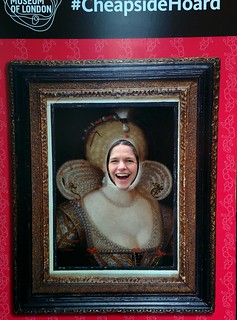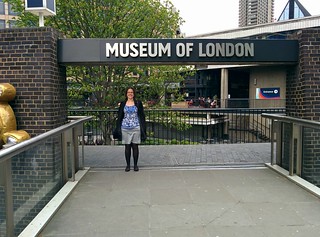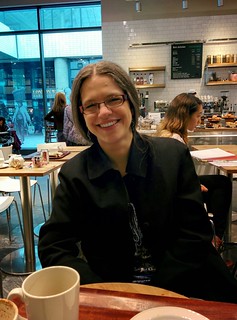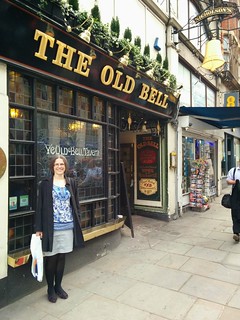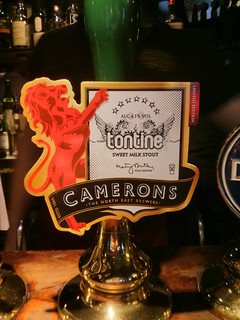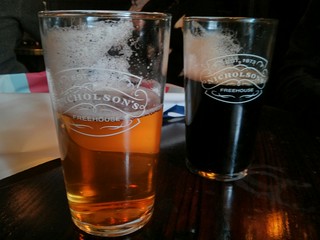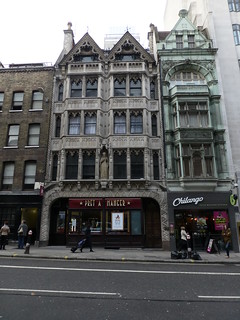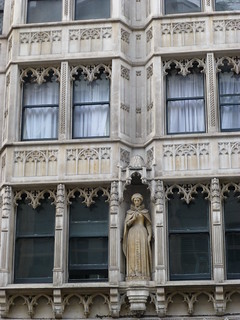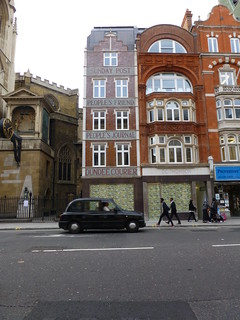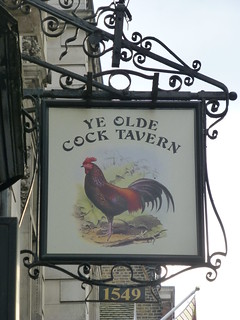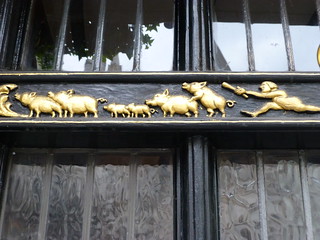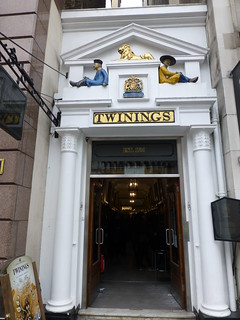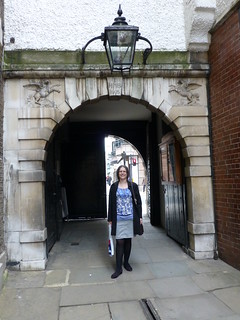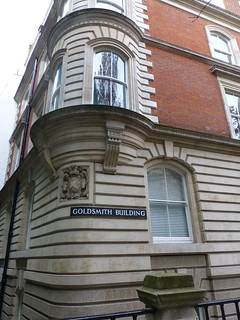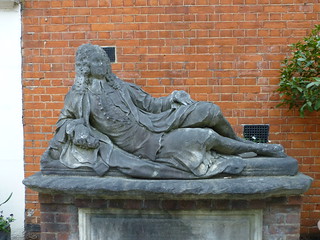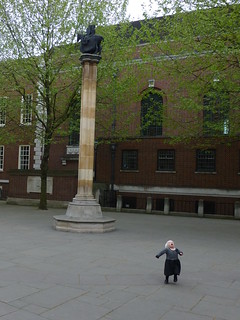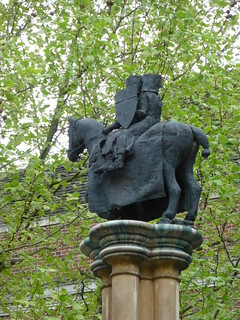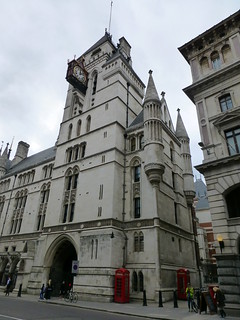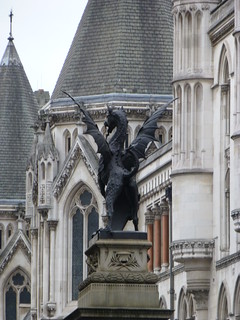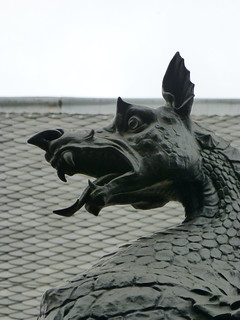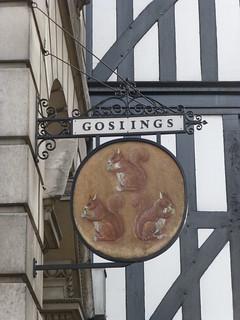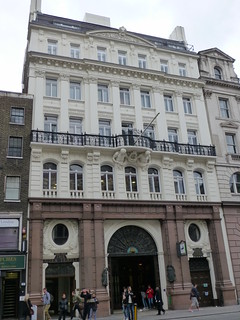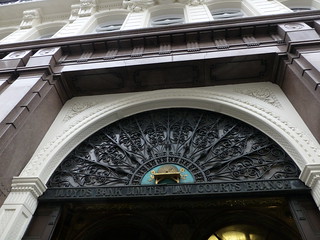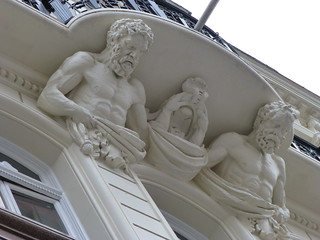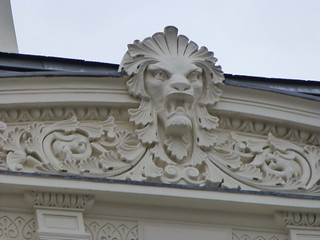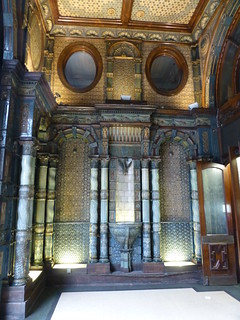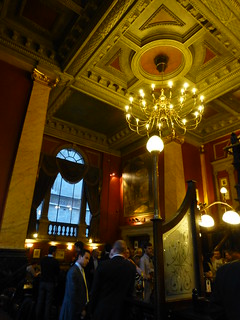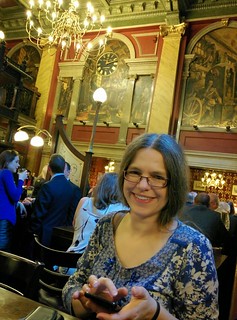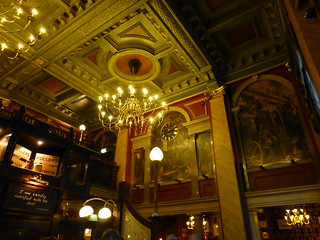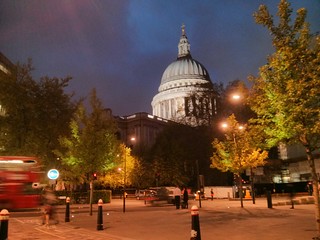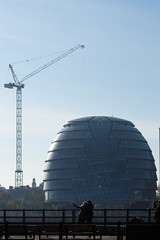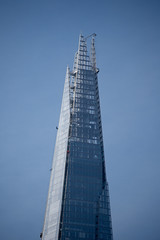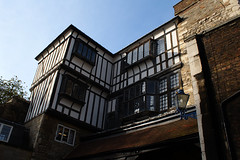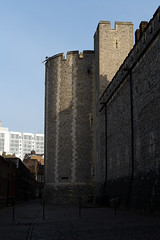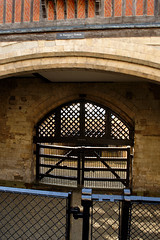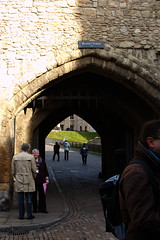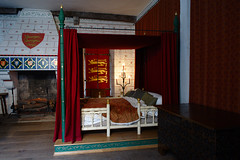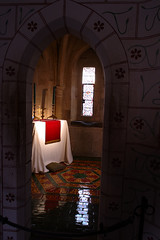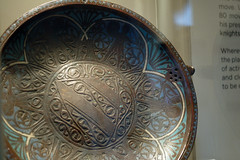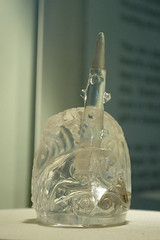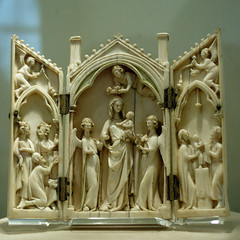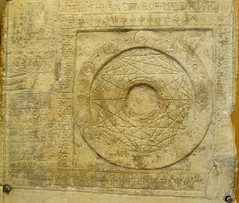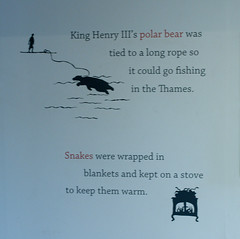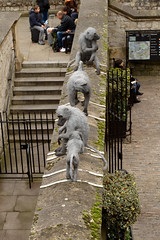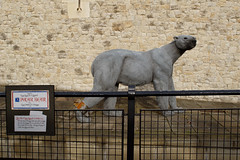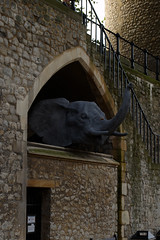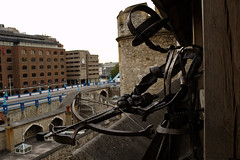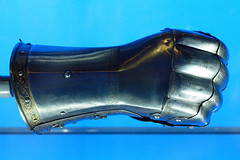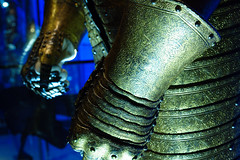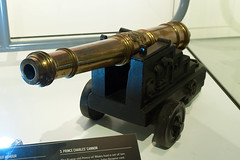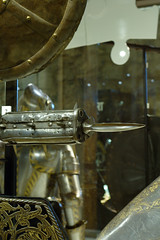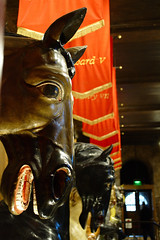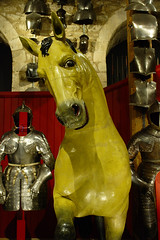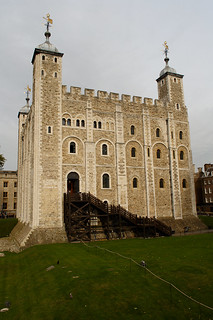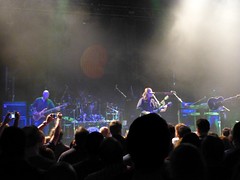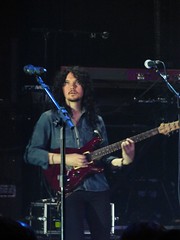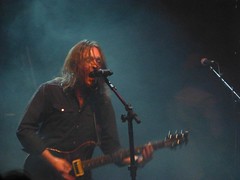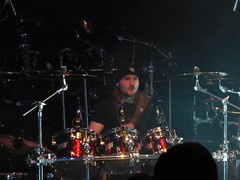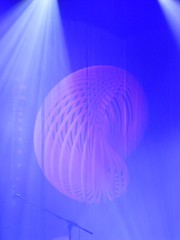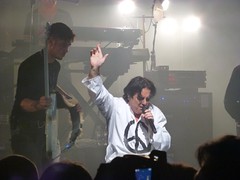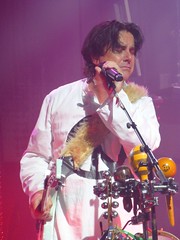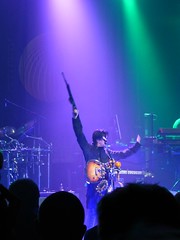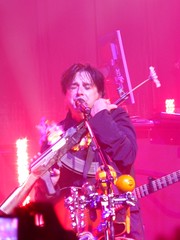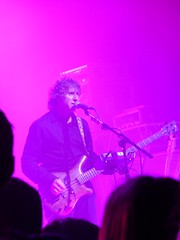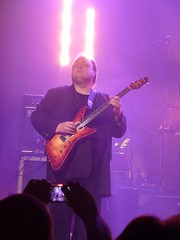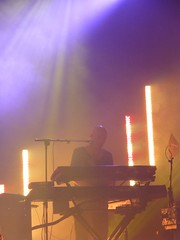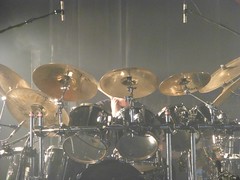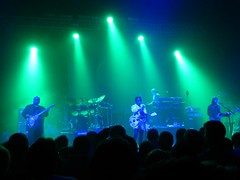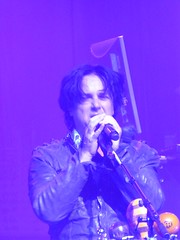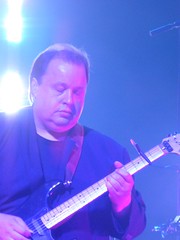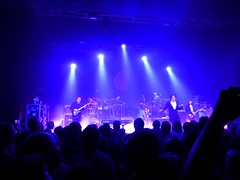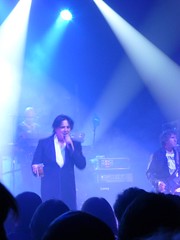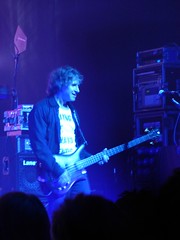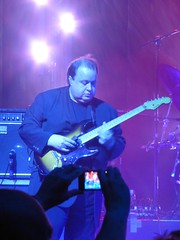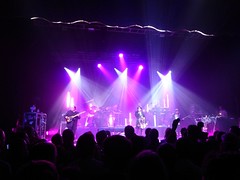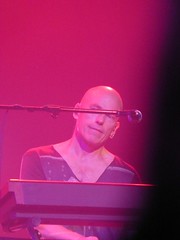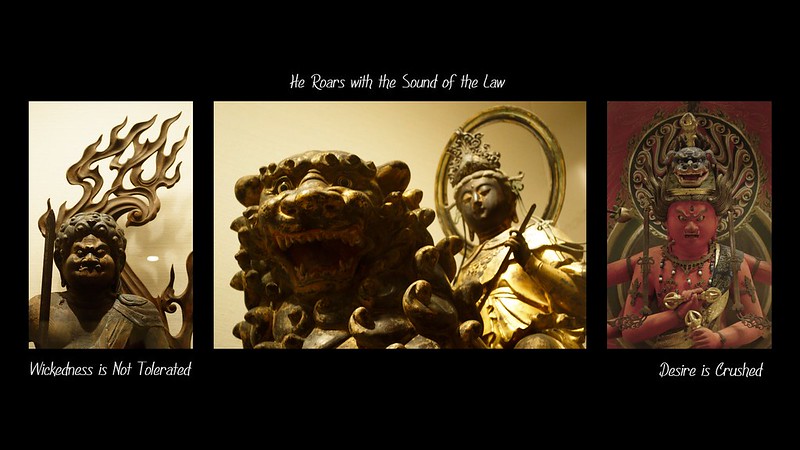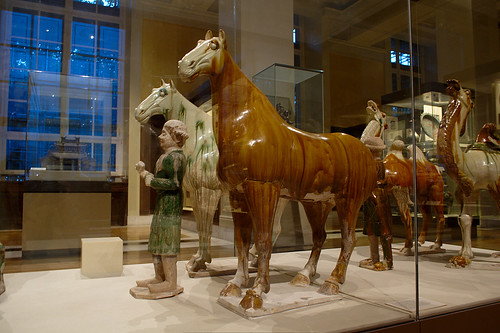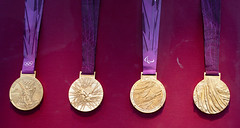Hans Holbein the Younger was one of the foremost portrait painters to work in England during the Tudor period (and perhaps ever), and it’s his paintings that shape how we see the court of Henry VIII. Discussing his time at the Tudor court on In Our Time were Susan Foister (the National Gallery), John Guy (Clare College, University of Cambridge) and Maria Hayward (University of Southampton).
They started the programme by setting the scene for the Tudor court of 1526, when Holbein first arrives. At this point Henry VIII has been on the throne for 17 years. Cardinal Wolsey is still his right hand man, and Anne Boleyn has just arrived on the scene. In terms of international politics there has just been a bit of a shake up. Previously Henry VIII was allied with the Spanish against the French – there had been a plan that the two countries would co-ordinate an attack on France, and once successful Henry VIII would get to keep northern France (and be crowned King of France) and the Spanish would claim southern France. However the Spanish had won a victory over the French, but then not divided the spoils with England as Henry VIII thought they’d agreed. So the alliance had broken down, and now Henry VIII was allied with France. Which is another factor in the waning influence of Henry’s Spanish wife, Katharine of Aragon, and in the rising influence of the French educated Anne Boleyn. I don’t think I’d heard anyone explicitly point out this political connection before, the narrative generally focuses on the need for an heir and “true love”.
Hans Holbein’s father was also called Hans Holbein and was also an artist, so generally “the Younger” and “the Elder” are appended to their names to disambiguate them. I don’t think they said on the programme where Hans Holbein the Younger was born, but it was in continental Europe (Germany, if I remember correctly). He was probably educated alongside his brother, by their father, in a wide variety of artistic techniques and media. This included goldsmith designs and techniques, frescos and other sorts of painting, and producing illustrations for printed books. This last was particularly emphasised by the experts on the programme as a new and lucrative market for an artist at the time. In early adulthood Holbein and his brother move to Basel (Switzerland) where they make a living mostly from illustrations and engravings, but also from religious paintings.
Holbein was looking for an opportunity to become a court painter (as it was a lucrative and prestigiuos position to hold). I think they said he had tried to get employment at the French court, but not had much success. In 1526 he moved to London, with a letter of introduction from Erasmus to Thomas More. He had probably sent ahead his portrait of Erasmus as a showcase for what his skills were. Thomas More was apparently not very optimistic about Holbein’s chances of employment in London. He wrote that England was “not fertile ground” – tapestries and theatrical sets where the dominant arts in the country at the time, not portraiture. But the experts suggest that with the benefit of hindsight this may have been because there wasn’t an accomplished portrait artist available until Holbein arrived.
During this first stay in London there doesn’t seem to’ve been much work – he started by being employed to paint theatrical sets, and he also undertook some commissions from Thomas More and from some other members of the elite (although not necessarily the court). Holbein returned to Basel – they weren’t clear on the programme why, nor if he originally intended to stay there. I’m not sure if that’s coz it isn’t known, or if it’s just that the programme was concentrating on his time in Tudor England so they were skipping lightly over the other information.
In 1532 Holbein returned to London. This is just as Anne Boleyn and Henry VIII finally get married, and there is some evidence that Anne Boleyn is a patron of his. There are no records available to say whether or not she actually paid him for anything, but there are several paintings with links to her. Including one painting of her in her nightgown (for which read “dressing gown” not “nightie”) – so he had access to her in informal settings such as her bedchamber which is a distinct mark of her favour. He is also first recorded on Henry VIII’s payroll during this time – so he has achieved his ambition of becoming a court painter. Although apparently he wasn’t paid as well as he might like – the French court painters received more money and more privileges from their king!
Holbein clearly had a knack for politics, or rather for staying out of politics. He remained in the employ of Henry VIII until his death in 1543, through the downfall of Anne Boleyn, and even weathered the storm surrounding Henry’s brief marriage to Anne of Cleves. When Henry was looking for his fourth wife, Holbein was the man sent to the courts of Europe to paint the potential brides. The two best known paintings are that of Anne of Cleves and that of Christina Duchess of Milan (who turned Henry down). It’s known that Holbein didn’t actually get to paint the whole Christina’s portrait from life – he had one 3 hour sitting with her, and quite probably only brought drawings back to London which he subsequently turned into a painting. It’s really quite remarkable that Holbein didn’t fall into disfavour after Henry’s marriage to Anne of Cleves failed almost before it began. Henry’s complaint was that he found Anne too ugly, but there’s no indication that he blamed Holbein for misrepresenting her (he did blame Cromwell, however). And the experts said that Holbein probably didn’t misrepresent Anne – despite Henry’s distaste she seems to’ve been regarded by contemporaries as a handsome woman. Probably the most Holbein did was minimise the German-ness of her clothing and headdress, so she would look more fashionable to English eyes.
As well as this overview of Holbein’s career in England the experts also discussed some of his better known paintings – you’d think that would be quite hard on a radio programme but I recognised all the works they discussed from having seen them previously, so had the right mental images. One of them was one of my favourite things in the Portrait Gallery when I visited it last year: the surviving half of the cartoon for the Whitehall Mural. The finished piece (which doesn’t survive) was a large dynastic portrait of the Tudors so far. On the left were Henry VIII and his father Henry VII, and on the right were their wives – Elizabeth of York for Henry VII and Jane Seymour for Henry VIII. The timing of this portrait is around or just after the birth of Edward VI, Henry VIII & Jane’s son. The cartoon is the same size as the painting was, so we can see that the viewer would’ve been presented with a lifesize image of the King standing directly in front of them – apparently terrifying for those who saw it. Inspection of the cartoon shows that originally the figure wasn’t full frontal, but Henry apparently wanted that changed so it would have the maximum impact.
Another of the paintings they discussed was the girl with a squirrel that we’d seen in the British Museum’s Germany exhibition in 2014. This portrait combines a clever use of symbols with a warm & touching portrait – the squirrel is not just the girl’s pet, it’s also part of her family’s coat of arms. And they also discussed The Ambassadors, which I think of as “the one with the weird skull in front”. This painting is also not just a portrait of the two men – it also showcases Holbein’s skill at painting many different objects. Including the distorted momento mori motif of the skull, which looks just right if viewed from the side of the painting.
Even at the time of Holbein’s death he was regarded as a particularly good portrait painter, and his reputation has only increased since. As I mentioned at the beginning of this post, Holbein’s portraits are how we see Henry VIII’s court. Those paintings are what shape our mental image of “the Tudors” and are what take them from a collection of dates and facts and turn them into people in our collective imagination.


